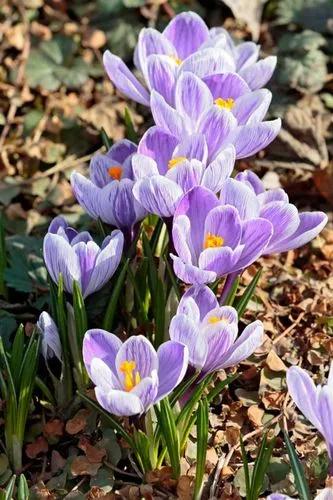Have you ever met people who haven’t tried potatoes? Probably not. Potatoes are a major staple food in dozens of countries around the world. Even though they’re affordable and easy to buy in any supermarket, plant lovers continue to grow potatoes in their own gardens.
Potato Care
Solanum tuberosum



Potatoes belong to the nightshade (Solanum) genus, along with tomatoes, eggplant, peppers, and other important foods. The potato plant has spirally arranged compound leaves and produces white, lavender, or purple flowers. The stem extends underground and forms structures called stolons, the ends of which enlarge to form the tubers we call potatoes. Potatoes can grow in a wide variety of climates, and care conditions change accordingly.
How to Care for the Plant

Water

Water potatoes at least once per week. They don’t tolerate drought very well, especially when flowering.

Pruning

You can trim the potatoes by pinching off the blossoms when they form. This removes competition and fosters larger potatoes. Also, prune the potatoes to ground level (1 inch – 2.5 cm) when the foliage has wilted.

Fertilizer

Apply organic, slow-release fertilizer when you plant your potatoes. Diluted liquid fertilizer every few weeks will also help you get a rich harvest.

Sunlight

Potatoes prefer 6-8 hours of full sun a day. Hilling also protects the tubers from sun overexposure, which turns them green and inedible.

Soil

A loose and well-draining all-purpose soil will work. Potatoes thrive in soil rich in organic matter.

Propagation

Potatoes are produced by vegetative propagation, which means that the new plant grows from the part of an old plant. It’s best to buy certified seed potatoes to propagate.
- Cut potatoes into smaller pieces with a bud in each. Do this a couple of days before planting.
- Dig the trenches, which are about 8 inches (20 cm) deep.
- Plant a seed in every trench 10 inches (25 cm) apart, the eye facing upward.
Cover each seed with 3 inches (7 cm) of soil. - The potatoes will begin to root in a few weeks. Then, fill the trench with another couple of inches of soil while leaving the top of the plant exposed. It’s called “hilling”.
- Do this every couple of weeks, and keep the soil moderately moist.

Temperature

Do not plant the potatoes in winter until the temperatures reach 45℉ (7℃). Potatoes grow best when the soil temperature is 60-70℉ (15-21℃). If your area has hot summers, mulch around the plant to decrease temperature.

Container

Potatoes are usually grown in the ground, but you can also plant them in containers. That way, your plants won’t be threatened by worms and other pests. A container should be about 2 to 3 feet tall (0.5 – 1m) with a 10- to 15-gallon (37 – 56 liter) capacity. You can buy one in a shop for gardeners. You can also repurpose wooden barrels, garbage bins, and other stuff for a potato container.

Fun fact

Potatoes come from South America and were only brought to Europe in the 16th century!

Popularity

13,509 people already have this plant 1,595 people have added this plant to their wishlists
Discover more plants with the list below
Related articles






